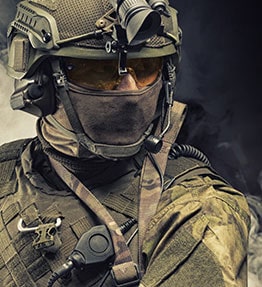Protection Types Breakdown

The number of people acquiring small firearms has increased sharply over the past decade. Most of them acquire guns to protect themselves in case of an attack. However, they could still be in danger unless they decide to protect themselves by wearing ballistic body armor. Other types of armor include spike and edged blade protection body armor.
Globally, each country has its own standards for ballistic, spike, and edged blade body armor. However, the US and UK standards are the most widely used in many parts of the world. In the United States, the National Institute of Justice (NIJ) is responsible for regulating the manufacture and sale of body armor. The Centre of Applied Science and Technology (formerly known as HOSDB) is responsible for regulating the manufacture and sales of body armor.
CAST and NIJ work in cooperation, with CAST handling spike and edged blade standards and NIJ handles ballistic armor standards.
Ballistic Threats
Threats posed by both low and high-velocity bullets are known as ballistic threats. To date, several types of body armor have been developed to offer protection against ballistic threats. However, the different types of ballistic armors are not equally safe. This means you have to be careful when buying ballistic body armor to get one that will protect you completely.
Ballistic protection armors can be categorized as Level IIa, Level II, Level IIIa, Level III, or Level IV armors. Level IIa, Level II, and Level IIIa protection armors are designed to offer protection against commonly available firearms. These include 9mm, .357 magnum, and .44 magnum firearms.
Conversely, Level IV ballistic armors are designed to offer protection against large, high-velocity bullets. These armors are mostly used by tactical police teams and the military. The armors can stop rounds fired by rifles and sub-machine guns.
Whereas Kevlar ballistic vests are used for Level II and Level IIIa protection, hard ballistic plates are used for Level IV protection. The hard plates are fabricated using very hard materials such as Dyneema polyethylene or some types of ceramic.
If you are thinking of buying ballistic body armor, then you need one that protects you against the threats you face. It is not necessary to buy Level IV body armor if you are not planning to go into a war zone. On the other hand, a level II or IIIa protection vest won’t help you in a war zone.
People who need to be protected using ballistic armors include soldiers, bodyguards, and security guards garrisoning sensitive government and private installations such as airports.
Spike Threats
The threats posed by sharp and projected objects are what are referred to as spike threats. These objects include long nails, needles, safety pins, and ice picks. Spikes easily penetrate through almost all fabrics by going through the tiny spaces between the threads in the fabric. To offer protection against spikes, body armors have been developed to completely stop sharp objects.
Spike threat protection armors are mostly used in prisons. To be guaranteed their safety, prison guards have no option but to wear spike-proof armor before entering the cell blocks. It is necessary to protect prison guards because most prisons are rife with sharp and improvised weapons hidden by the convicts.
Edged Blade Threats
Threats posed by individuals wielding cutting tools such as knives and broken glasses are categorized as edged blade threats. Under the NIJ and CAST guidelines, Edged blade attacks are categorized as Level I or Level II.
Unlike spikes, edged blades usually penetrate fabrics by cutting through the threads in the fabric. This means you can still be injured by spikes even when wearing edged blade protection armor.
Edged blade armors are suitable for use in locations like nightclubs where assailants can easily break bottles and use them as weapons.
 US
US UK
UK SE
SE NL
NL FR
FR ES
ES DE
DE







